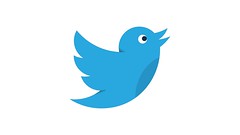

Twitter is a free messaging site which allows users to exchange public messages in 140 characters, known as tweets.
Tweets are limited to 280 characters; forcing people to be concise. They usually include text, web links, images and further online content, for example an online file, video or survey.
It has been used as a teaching tool and as a virtual conference platform and people are finding new ways of working with it all the time, for example, by integrating Vines and Periscopes.
You can search within Twitter for organisations, people and topics.
Your tweets are seen by those who follow you. You see the tweets of those you follow. You can quickly build up a network of peers with shared interests.
You can have conversations with interesting people, gather / share resources with your peers and make contact with influential people outside your physical social circles.
Focusing on and following people only within the subject area you teach and /or research will make twitter easier to understand how useful it can be.
Twitter is a great way to tell people about your current projects, your professional activities and your research outputs.
Twitter will help you to keep up to date. If you follow the right people you will know which bursaries are up for grabs, when calls for papers are announced, what's going on in Higher Education and what new developments are occurring.
Follow Following another user means that all their tweets will appear in your feed. Click on their user name, and their profile will appear on the right of your screen, with a bright green Follow button. Just click this to follow
Unfollow To stop seeing someone else’s tweets, go to your following list and find the person you want to stop following and hover the cursor over the green Following button until it is replaced by the red Unfollow button, then click.
RT ReTweets are quoting a message. It's a way for users to share your messages with their networks and a way for you to share interesting things that your followers may not have seen.
@ Used in tweets when you want to mention another user. Also the first part of every Twitter user name EG @BruneLibrary
DM A Direct Message is private. Do not confuse this with replying.
# A hashtag eg #altmetrics is a way to bring together users focusing on a particular topic rather than by whether they follow each other.
Favourite To favorite a Tweet means to mark it as one of your favorites by clicking the yellow star next to the message.
#FF stands for "Follow Friday." Twitter users often suggest who others should follow on Fridays by tweeting with the hashtag #FF.
MT Similar to RT, an abbreviation for "Modified Tweet." Placed before the retweeted text when users manually retweet a message with modifications, for example shortening a Tweet.
1. Remove the blank torso.
Leaving the torso as your avatar will make potential followers think you're a spam account or a troll. You don't need to put a photo of yourself in it; it can be anything you feel represents you.
2. Use lists to get organised.
Organise your friends/colleagues/interests into lists; this ensures you're less likely to miss tweets and can filter what you do want and don't want to see.
3. Use keywords.
Typing keywords into Twitter's search function will help you find information on a topic you're researching and see what others are saying about it.
4. Maintain your privacy.
You can keep your account private or choose to keep it open. There's no right or wrong answer to how much privacy one should keep on Twitter; however, as you are using this for learning, teaching and research you will want to err on the professional side. Don't tweet anything you wouldn't want your boss to see.
5. Set up course hashtags.
If you're a member of academic staff and thinking of using Twitter for teaching, why not consider setting up a course hashtag eg #SA1604.